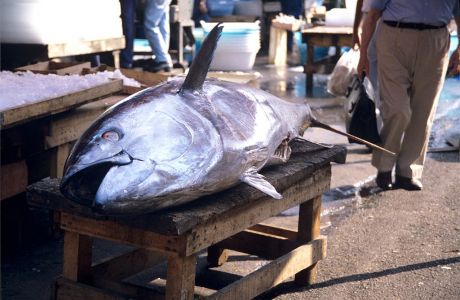
Découpage_d'_un_thon_rouge
By Jpbazard Jean-Pierre Bazard (Own work) [GFDL (http://www.gnu.org/copyleft/fdl.html) or CC BY-SA 3.0 (http://creativecommons.org/licenses/by-sa/3.0)], via Wikimedia Commons
Although tuna fisheries play an important social and economic role within the EU, their variations with respect to human activities are not fully understood. An EU-funded initiative based on an ecosystem approach to fisheries management sparked considerable interest in the scientific community.
The aim of the QUAESITUM (Quantifying environmental and social interactions for tuna fisheries management) project was to investigate the behaviour of tuna. This included their response to social and environmental stimuli, as well as interconnections with different species of fish.
Project partners aimed to quantify how environmental and social interactions influence the distribution of tuna, an important issue for managing a species faced with over-exploitation. The analysis was based on data collected from around fish aggregation devices (FADs), which are tethered floats or buoys used around the world to attract open-water fish such as tuna.
Researchers investigated the role played by interactions within species and between different species in their distribution around FADs. This required the creation of dedicated analytical and modelling tools that could deduce social interactions from analytical data. This approach was based on knowledge of animal behaviour, fisheries science, statistical physics and computer modelling.
The work conducted by QUAESITUM will lead to new ways for estimating the abundance of tropical tuna based on its behaviour around FADs. This will have a major impact on the wider fisheries management community and opens the way to new lines of research, where different abundance indicators, based on fish behaviour, can be obtained from field data.

